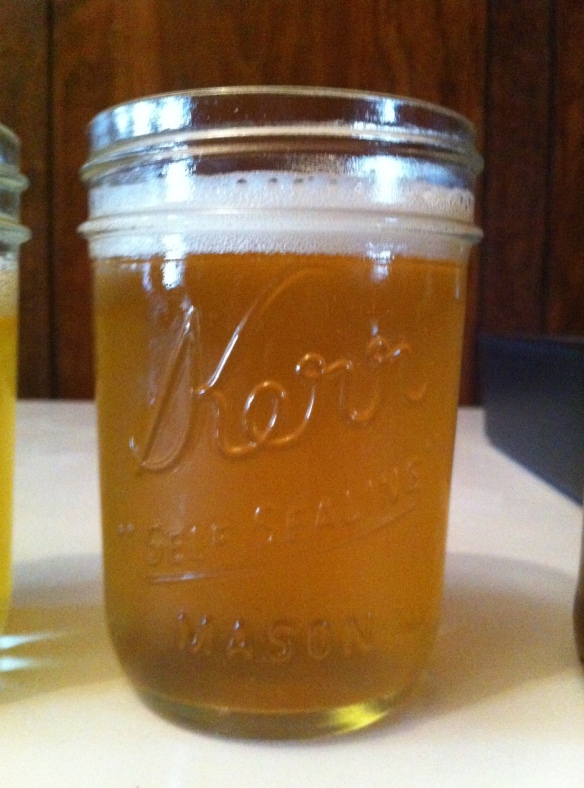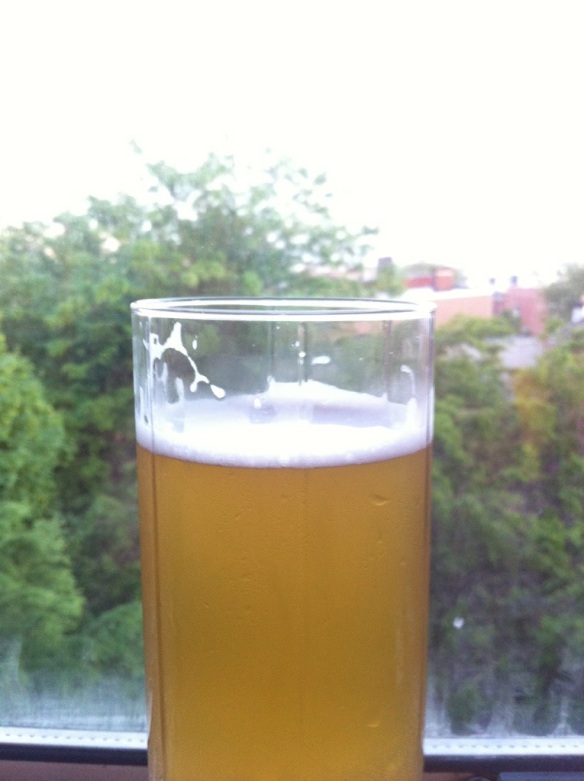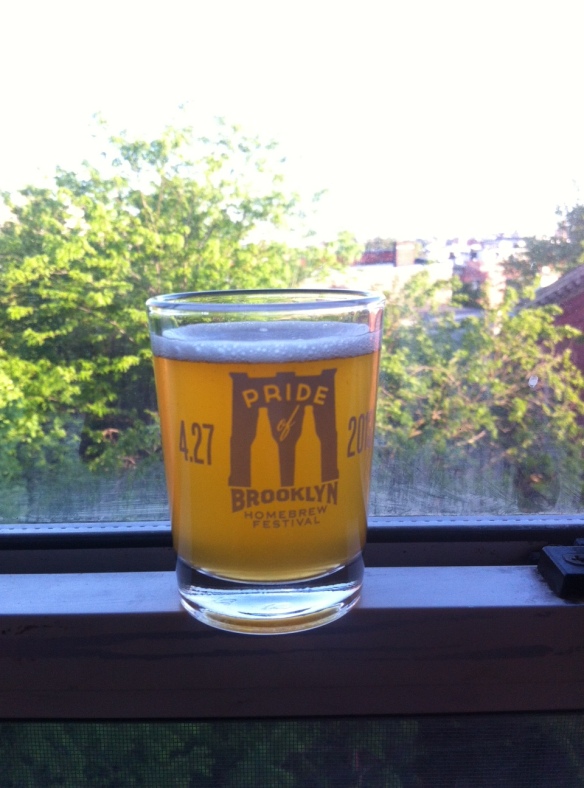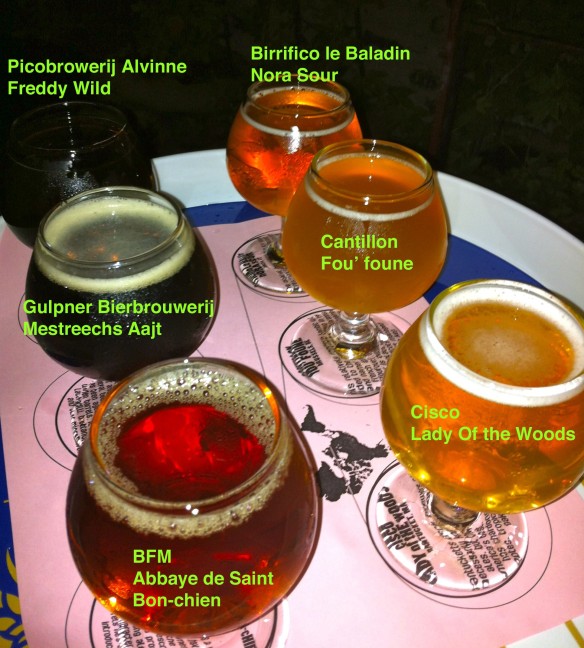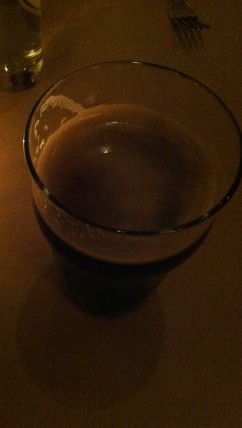The temperatures are rising in Brooklyn, and fermenting a beer without temperature control can be a challenge. Enter Saison.
I decided to take a traditional wit recipe and adapt it as a Saison and brew it as a small batch. Basically, this beer is all about the malted wheat, with a little bit of flaked oats thrown in for good measure. It’s hopped with saaz, and finished with chamomile, corainder and orange peel. Instead of going with a traditional wit yeast, I fermented this one with the (deservedly) infamous Wyeast Belgian Saison.
This one’s a witbier in every sense, except for the yeast. It’s malt-forward, with a dry and creamy mouthfeel (likely from the oats), and a refreshing, floral and earthy finish. I took it to my local homebrew club and got “cinnamon toast crunch” and (most interestingly) “the ham from lunchables”. I’m going to choose to take that as a compliment. I’m re-brewing a 5gal batch with a little bit more citrus and less chamomile as well as a little cardamom, since I think the vegetal earthiness dominated this first attempt. See below for the recipe.
Recipe Specifications
————————–
Boil Size: 2.62 gal
Post Boil Volume: 1.87 gal
Batch Size (fermenter): 1.50 gal
Bottling Volume: 1.25 gal
Estimated OG: 1.048 SG
Estimated Color: 3.2 SRM
Estimated IBU: 12.3 IBUs
Brewhouse Efficiency: 65.00 %
Est Mash Efficiency: 82.2 %
Boil Time: 60 Minutes
Ingredients:
————
Amt Name Type # %/IBU
1 lbs 12.8 oz Wheat Malt, Bel (2.0 SRM) Grain 1 67.9 %
3.6 oz Oats, Flaked (1.0 SRM) Grain 2 8.5 %
3.6 oz Wheat, Flaked (1.6 SRM) Grain 3 8.5 %
6.4 oz Extra Light Dry Extract (3.0 SRM) Dry Extract 4 15.1 %
0.25 oz Saaz [4.00 %] – Boil 60.0 min Hop 5 12.3 IBUs
1.00 tbsp Chamomile (Boil 5.0 mins) Herb 6 –
1.00 oz Orange Peel, Bitter (Peel of 1 Orange) ( Spice 7 –
0.10 oz Coriander Seed (Boil 5.0 mins) Spice 8 –
0.25 oz Saaz [4.00 %] – Boil 0.0 min Hop 9 0.0 IBUs
1.0 pkg Belgian Saison (Wyeast Labs #3724) [124. Yeast 10 –
Mash Schedule: BIAB, Full Body
Total Grain Weight: 2 lbs 10.4 oz
—————————-
Name Description Step Temperat Step Time
Saccharification Add 2.79 gal of water at 160.0 F 156.0 F 60 min
Mash Out Heat to 168.0 F over 7 min 168.0 F 10 min
Sparge: Remove grains, and prepare to boil wort
Notes:
——
Mshed in, temperature settled at about 155F. Covered with towel, placed top of the igloo mashtun on top of the kettle lid, left on the stove (no gas) for 75min.
Temperature at start of mash: 155F
Temperature at 75min of mash: 146F
1 whirlfloc @ 10min
1 dose of Wyeast Yeast Nutrient @ 10min
Late-addition of light DME @ 5min

